This pork meat and innards stew recipe is from Southern Mindanao Region 11 (Davao). Known as paklay, it is composed of pork meat, usually the pork belly, and pork innards such as kidney, spleen, heart and liver, pineapple chunks, bell peppers, vinegar and salt.
Paklay: A Hearty Taste of Southern Mindanao
There’s a certain magic in a dish that takes you back to your roots, reminding you of family gatherings, the comforting smell of home-cooked meals, and the rich flavors of tradition. For me, it is one of those dishes. Growing up, this flavorful pork stew with its bold combination of innards, vegetables, and spices was something my uncle, Tito Boyet, always brought to life in our family kitchen. His way of making this Southern Mindanao specialty wasn’t just about following a recipe—it was about preserving memories, each bite steeped in nostalgia.
What Makes Paklay Special?
Hailing from Region 11, specifically Davao, it is a local favorite known for its use of pork belly and various innards, like the kidney, spleen, heart, and liver. The dish stands out because of its medley of flavors: the sweetness of pineapple, the heat of ginger and bell peppers, and the tanginess of vinegar. If you haven’t tried it before, the dish can seem a bit adventurous, especially for beginners, but don’t let the use of pork innards intimidate you. In fact, the unique combination of meats is what makes this stew a standout dish. Each ingredient plays a role in crafting its depth and complexity.
Back when my cousin, Jessa, first moved to Davao for college, she found herself missing the hearty meals of home. It was the dish that brought her comfort. She said it tasted like Sunday lunch at Lola’s, filled with laughter and stories. Inspired by her memories, I’ve learned to cook it whenever I feel a little homesick, and it never fails to lift my spirits.
The Secret to a Perfect Paklay
As with many traditional Filipino dishes, the key to a great paklay is in the balance of flavors. It’s a dish that relies on the interplay of sour and savory, with a touch of sweetness from the pineapple. One important tip I learned from my Tito Boyet is to sauté the garlic, ginger, and onion until they release their fragrance before adding the pork and innards. This step is more than just a cooking technique—it infuses the meat with an aromatic base, setting the stage for the layers of flavor that come later.
Pork belly is used for its rich, fatty texture, which brings comfort and fullness to the dish. The pork innards, on the other hand, contribute a slightly chewy, tender texture, making each bite a unique experience. Don’t rush this part. Allow the meat to turn slightly brown before adding the vinegar and broth. This helps seal in the juices and gives the meat that golden, flavorful crust that enhances the dish’s overall taste.
A Bit of History: How Paklay Reflects Filipino Ingenuity
Like many Filipino dishes, paklay is born out of a culture of resourcefulness. Pork innards, which were traditionally considered less desirable cuts, are transformed into a delicious and hearty stew, proving once again the Filipino ability to turn humble ingredients into something extraordinary. My Lola used to say that nothing ever went to waste in the kitchen, and it is a shining example of that. The combination of pork belly and innards was historically a way to stretch out food resources while still creating something flavorful enough to feed a large family.
The inclusion of pineapple, though seemingly unusual for a stew, reflects the influence of Spanish colonization, which introduced tropical fruits into savory dishes. The sweetness cuts through the richness of the pork and balances the sharpness of the vinegar, creating a well-rounded flavor profile that’s both exciting and comforting.
Simple Ingredients, Bold Flavors
While paklay might seem complex at first glance, its ingredients are straightforward, and most can be found in your local market. The secret, as always, is in the technique. Adding the vinegar and broth at just the right moment is crucial. When I first tried to make this dish on my own, I asked my Tita Fely why it was important to bring the vinegar and broth to a boil before simmering. She explained that this helps mellow out the sharpness of the vinegar, allowing the other flavors to shine through as the meat slowly absorbs the liquid, becoming tender and flavorful.
After simmering the meat to the perfect tenderness, the dish is brightened by the addition of pineapple chunks and bell peppers. The last five minutes of cooking are essential for blending the flavors without overcooking the vegetables, keeping them crisp and vibrant. It is typically served hot, and for me, there’s nothing better than pairing it with a warm bowl of rice, letting the rich broth soak in with each bite.
A Dish That Tells a Story
For beginners who might feel unsure about tackling a dish like this, I say this: embrace the process. Cooking it is more than just following a recipe—it’s about honoring a tradition. Each time I make it, I remember the laughter around my family’s dining table, the smell of garlic and ginger in the air, and the stories my uncle would tell us as we eagerly waited for the stew to finish simmering.
The dish is not just a meal; it’s a reminder of where we come from, a dish that brings families together, and a taste of Southern Mindanao that you can recreate in your own kitchen, no matter where you are.
Paklay (Pork Meat and Innards Stew)
Ingredients
- 1/2 cup each of cooked and sliced pork and innards liempo, kidney, spleen, heart and liver
- 2 Tbsp. cooking oil
- 1 tsp. minced garlic
- 2 Tbsp. chopped onion
- 1/4 cup native vinegar
- 2 cups broth from boiled pork, beef or chicken
- 1 cup cubed unripe pineapple
- 3/4 cup sliced green and red pepper
- 2 1/2 tsp. salt
Instructions
How to Cook Paklay:
- Sauté garlic, ginger, onion until fragrant.
- Add the pork and variety meats and continue sauteing until the meat is slightly brown.
- Add vinegar and broth. Bring to a boil. Simmer until the meat is tender.
- Add pineapple and pepper. Season with salt.
- Cook for 5 minutes longer. Serve hot. 6 servings.
Notes
Cooking Tips:
Sauté the Aromatics Thoroughly
Make sure to sauté the garlic, ginger, and onions until they release their aroma and turn golden. This step enhances the overall flavor of the dish, as the aromatics infuse the pork and innards with a rich, savory base. Properly sautéing them will create a flavorful foundation for your stew.Brown the Meat for Extra Flavor
When cooking the pork and innards, allow them to brown slightly before adding any liquid. This technique helps to seal in the meat’s juices, creating a delicious, caramelized crust. Browning adds a depth of flavor that enriches the stew’s overall taste.Simmer Slowly for Tender Meat
After adding vinegar and broth, let the mixture simmer slowly on low heat. This allows the meat and innards to tenderize, soaking up all the flavors without becoming tough. Low and slow cooking is key to achieving a perfectly tender meat and innards.
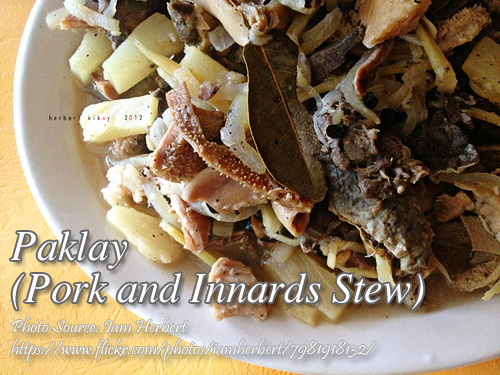

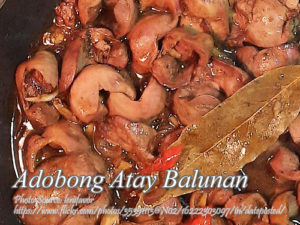
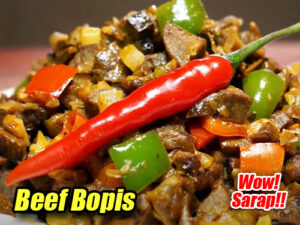
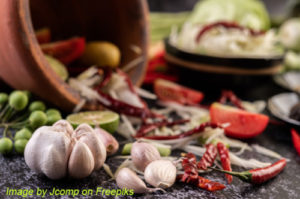
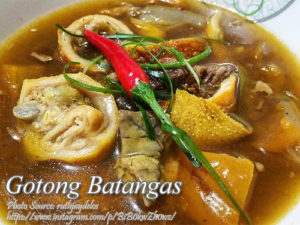
Sarap ng paklay pero napapansin ko walang vitsin or ajinomoto. Masarap na kaya kung asin lng.
Hi Mel, marami kasing health conscious kaya hindi ko na nilagay. Pero pwede mo ring lagyan na naayon sa panlasa mo.
Mas masarap ang mga pagkain ng walang preservatives at ang pampalasa nya po ay pure organic. No need na pi maglagay ng vetsin kasi dun pa lang sa natural ingredients masarap na.
Hi Marielle, yes tama po kayo hindi mabuti sa kalusugan yung mga artificial flavorings.
are there other davao delicacies?